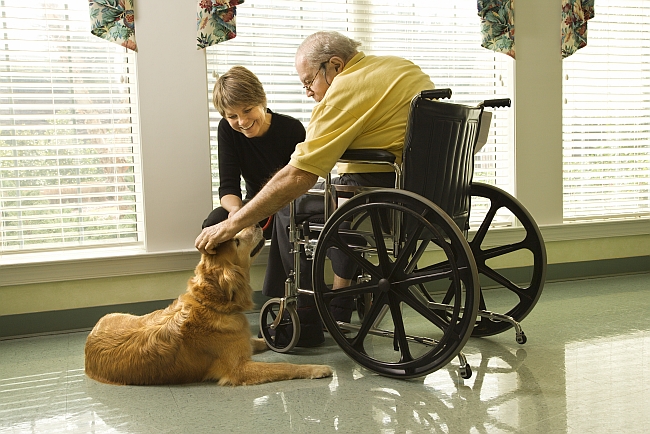
Dogs who work as therapy pets provide great hope for healing amongst needy patients. It can be an emotional, mental and physical aid to have the comforting presence of a dog nearby in times of difficulty, trauma, recovery or therapy sessions. If you are considering whether or not your dog might be suited for this kind of work, review some of these relevant questions about how therapy pets function, and what is required of them. There are a variety of different roles that therapy pets can be groomed for (pun intended!). Some of these include visiting ill/convalescing patients, hospital bedside dogs, assisted living pets, childhood-reading programs, physical therapy pets, and “listener” dogs who attend psychological therapy sessions, etc.
What does it take to become a therapy pet?
Depending on the organization or certification provider, there are different stipulations required for dogs to become certified as a therapy pet. If you are curious to see whether or not your dog might be a good candidate for this kind of service, review the American Kennel Club’s standards for Canine Good Citizen qualifications. These are generally similar evaluations for dogs working toward becoming therapy pets
What are some of the lifestyle requirements and expectations of therapy pets?
- The dog must be spayed/neutered to be certified.
- There must be clear medical records kept on file, as well as a record of vaccinations.
- The pets must be bathed before each therapy visit, so that their appearance, odor and hygiene are all intact.
- The dog must have ID tags and wear them at all times (their handler must carry ID as well.)
- The dog must be kept on a leash for the duration of the visit.
- They must be of a certain age, as must their handler.
Can therapy pets work with any trainer, or do they need to be partnered with a specific certified adult?
This will depend on the kind of program you choose. Obviously if a dog is given specific training/commands that his handler is not using, it will render much of the training ineffective. Because of this, there are programs in place that require both the dog and his human to attend the classes together. Note: therapy pet handlers work as “volunteers” and are not paid for their labor and support.
How long does the certification last?
Some certifications require the dog (and sometimes the handler) be re-tested every few years, and that the certification training be renewed periodically.
Can therapy dogs attend work or school with their assigned patient?
If the pet adheres to the rules this can be allowed under certain circumstances. There is usually a 2 hour limit on visitation rights, as longer than this can be stressful or taxing for the dog. They must be kept on the leash and be accompanied by their handler. While some pets are allowed to be kept close by for greater lengths of time, these may be unique circumstances, and are usually not therapy pet rules.

